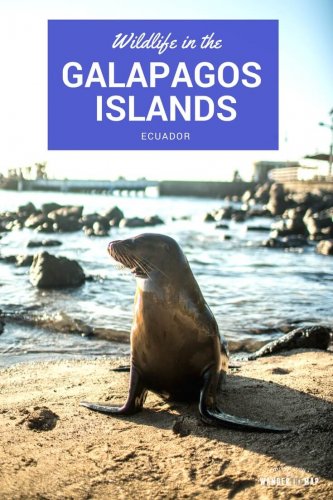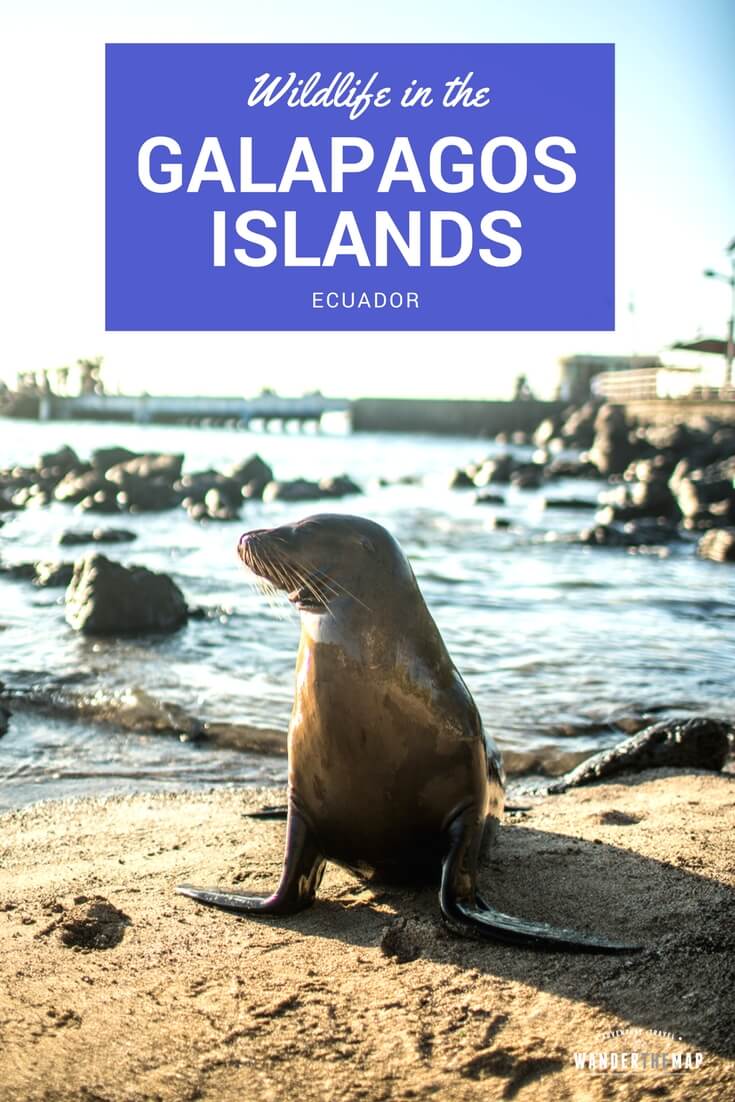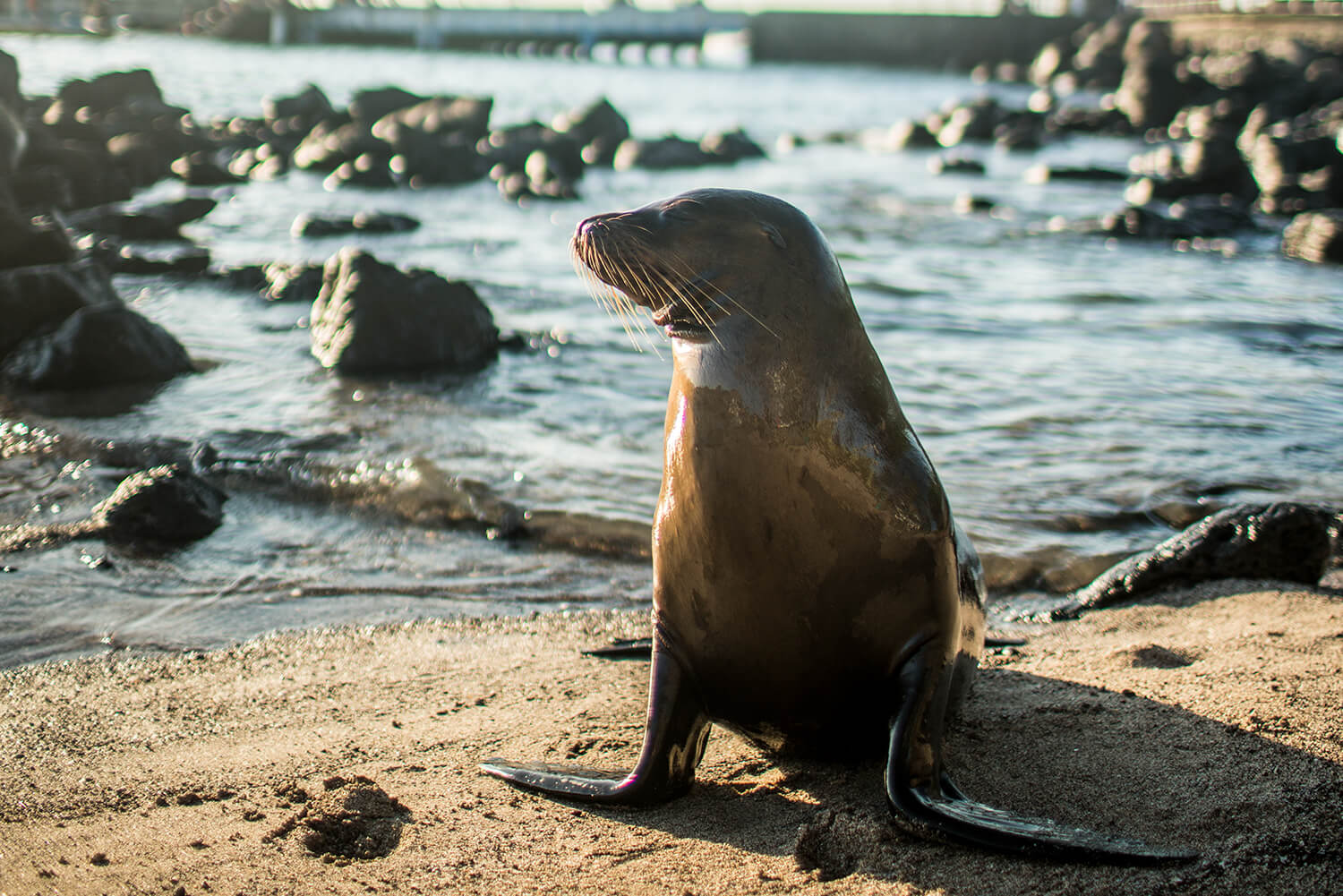
28 Oct Wildlife Sightings: Our Favorite Animals in the Galapagos Islands
While most of our trip to the Galapagos Islands was focused on adventure activities, there’s no way you can visit these islands without an abundance of amazing wildlife encounters. During our 10 days in the Galapagos Islands on tour with Galakiwi, we saw more wildlife than we could have ever imagined. It’s amazing how almost every which way you turn, you are practically face to face with yet another adorable creature. And I have to say, I had such a hard time containing my excitement!
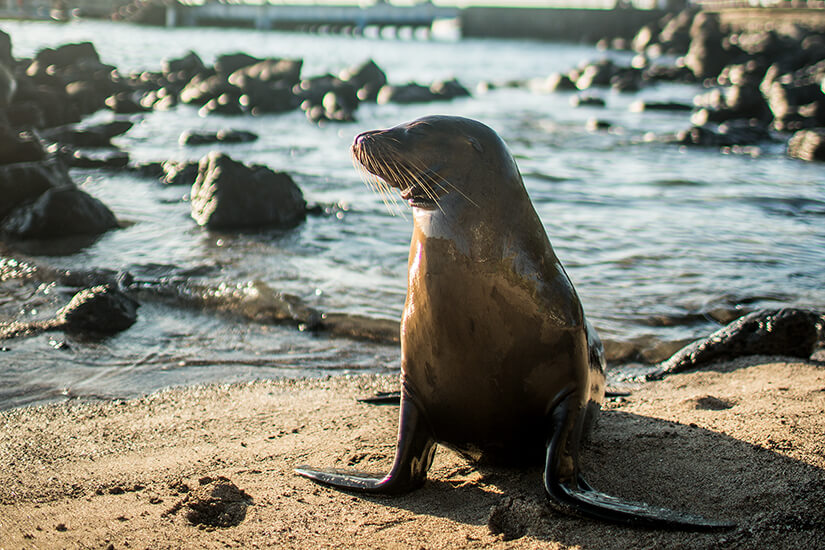
Instead of taking a cruise through the islands, our tour was land based. This meant that during our trip we stayed overnight in hotels rather than on a cruise ship. The four islands we visited were San Cristobal, Floreana, Isabela, and Santa Cruz, and each island is home to a wide range of unique wildlife. It’s no surprise that this archipelago had a lasting impact on Charles Darwin and his Theory of Evolution.
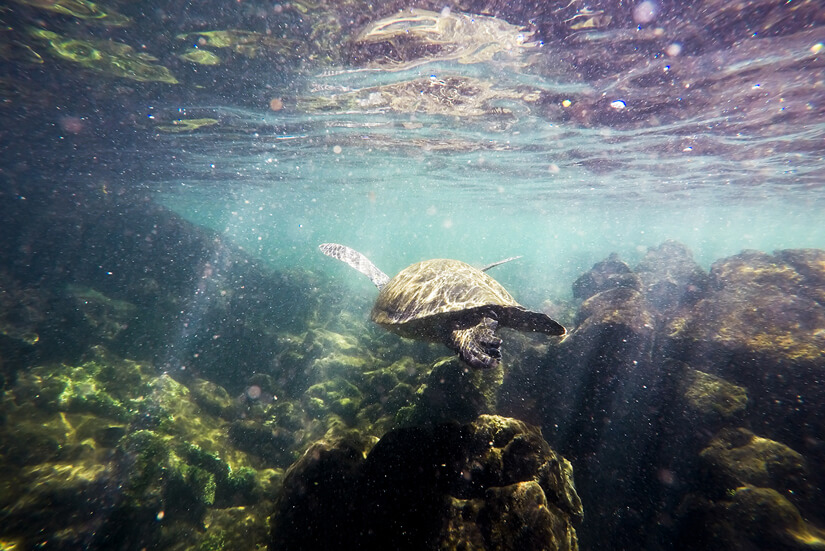
Here are some of our favorite wildlife encounters in the Galapagos Islands. Of course, we saw so many other amazing animals besides the ones listed below, but these are the ones that made a lasting impression in our minds.
Sea Lions
We encountered plenty of sea lions on all four islands we visited, but on the island of San Cristobal, sea lions were literally everywhere. And, I have to say they quickly became one of our favorite animal sightings of the entire trip. San Cristobal Island was our first stop in the Galapagos, and this island is home to a large population of sea lions that can be found both on land and in the water. The sea lions are just another resident in San Cristobal—they make themselves right at home on the beaches, benches, docks, boats and just about everywhere else.
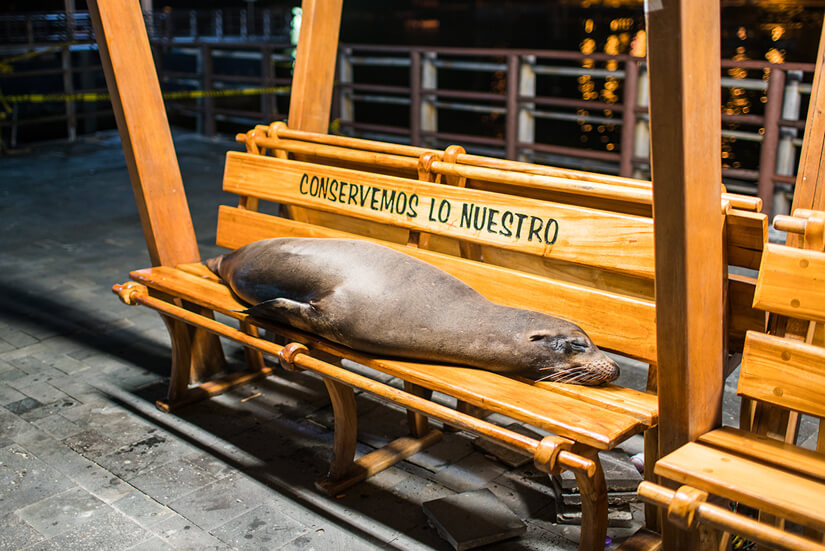
When we went for a walk on our first night in town, we thought the beach was covered in large rocks, but we were completely wrong. The rocks were actually hundreds of sea lions jostling for a prime sleeping spot on the sand!
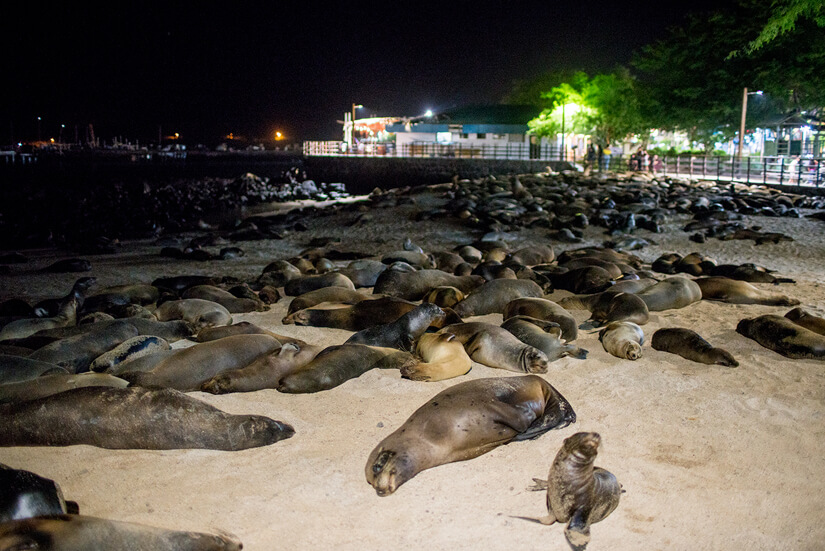
The next morning during an early SUP session we took a short break, and all of a sudden, we noticed several sea lions had come out to play. It was so much fun to watch them twist, twirl and splash in the water right next to us, and our paddle boards created the perfect vantage point for this wonderful show.
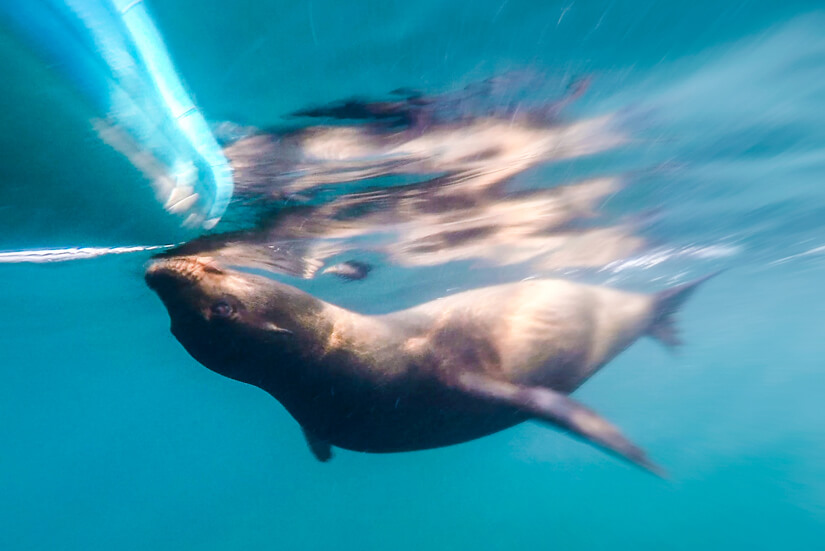
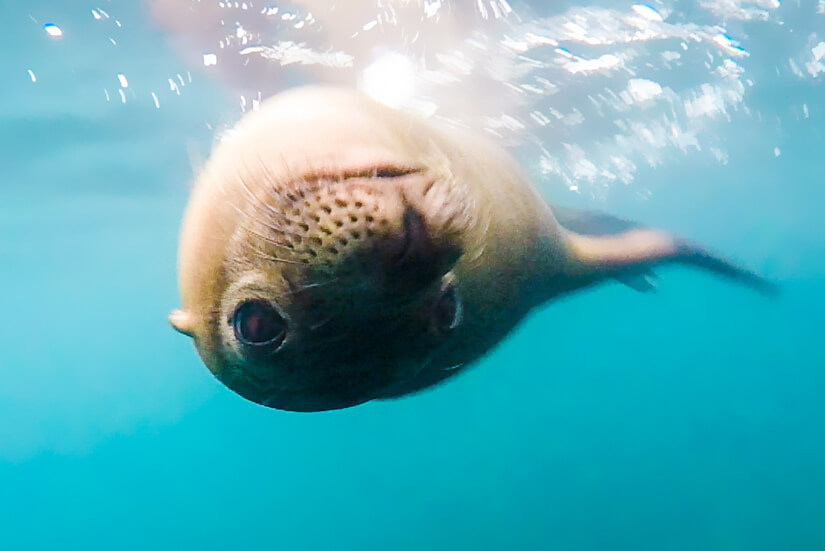
I could probably write an entire post about stories dedicated to sea lions—we seriously had so many amazing encounters with these funny and adorable creatures—but let’s move on to more wonderful wildlife in the Galapagos Islands.
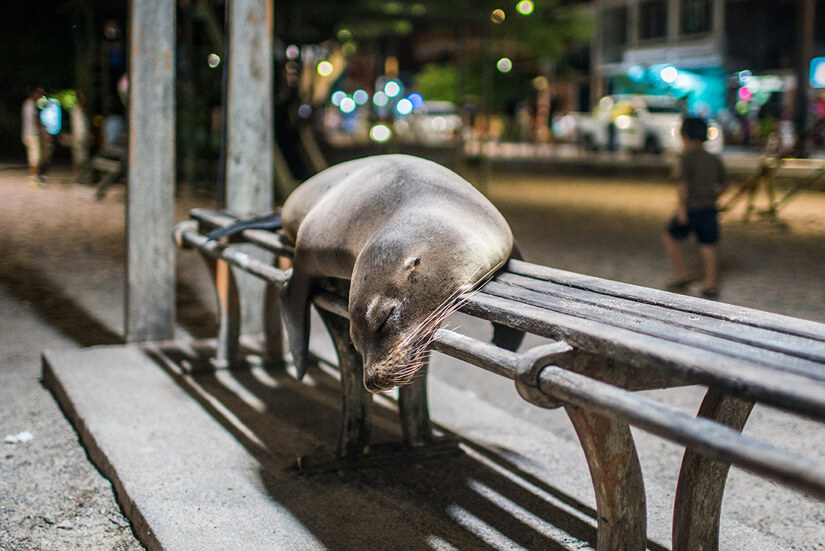
Sea Turtles
I’ve always wanted to swim with sea turtles, and wow, was that wish ever fulfilled in the Galapagos! The majority of our snorkeling sessions included encounters with adorable turtles, and they were so much fun to watch as they slowly swam around underwater. Even though sea turtles are pretty chill, they have been clocked at swimming around 35 miles per hour! When we were snorkeling at Kicker Rock off of San Cristobal, there were several sea turtles munching on algae in the water. Some of the turtles swam so close to me that we were almost face to face for a moment—it was incredible!
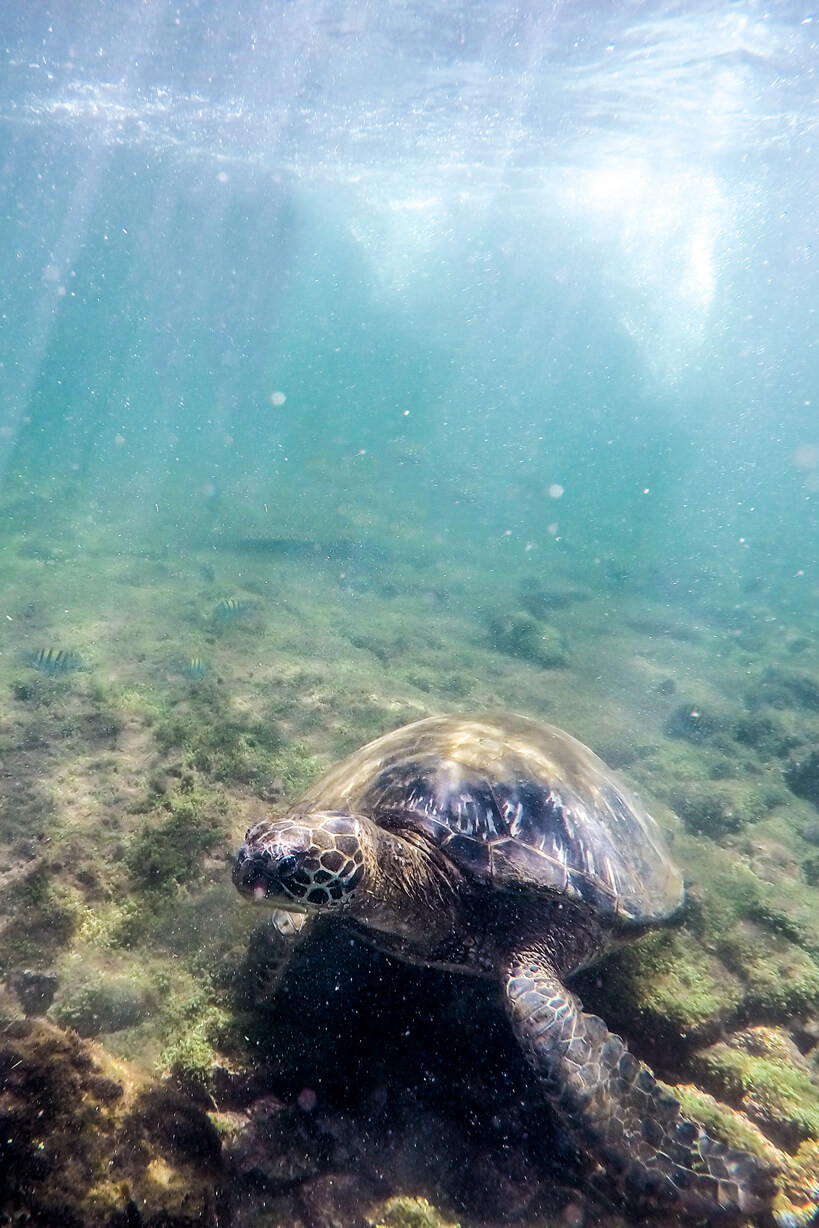
Giant Tortoises
Giant tortoises have always been the first animal to pop into my mind when thinking about the Galapagos Islands, and we had the chance to see them many times throughout our trip. Unlike sea turtles, giant tortoises spend all of their time on land and depending on their habitat, their size and shape differs. Unfortunately, due to the fact that many species of the giant tortoise are either extinct or threatened, it can be rare to spot them in the wild as many of their remaining habitats are off limits to tourists. But fear not, this doesn’t mean you won’t be able to spot a giant tortoise during your visit to the islands. We encountered wild tortoises at a few spots during our visit. One was during our bike ride to the Wall of Tears on Isabela Island, and another was at a farm in the highlands of Santa Cruz where wild tortoises roam free.
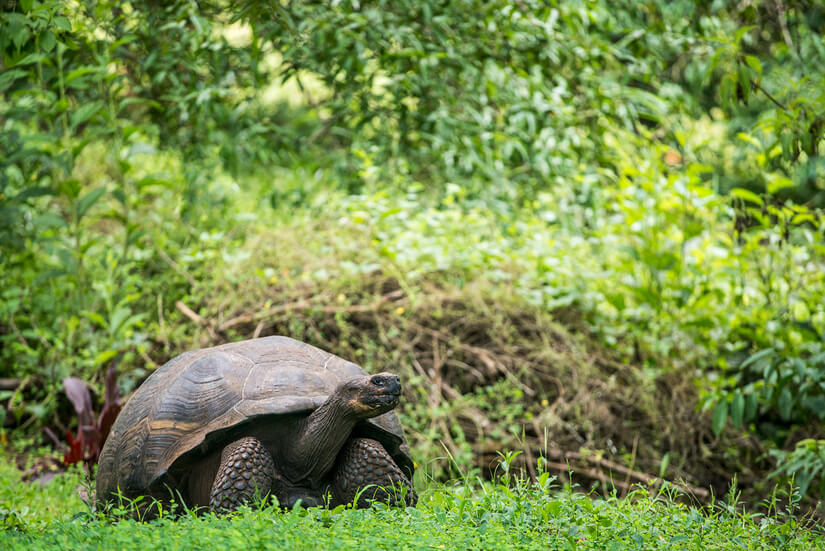
We also had the chance to see giant tortoises in research centers and breeding centers. These facilities are important as they are working to repopulate the tortoises in their native habitat. We visited the tortoises at Asilo de la Paz in the highlands of Floreana Island, and at the Giant Tortoise Breeding Center on Isabela Island. The breeding center had tortoises of all ages and it was so fun to see tiny newborn babies as well as the old giants!
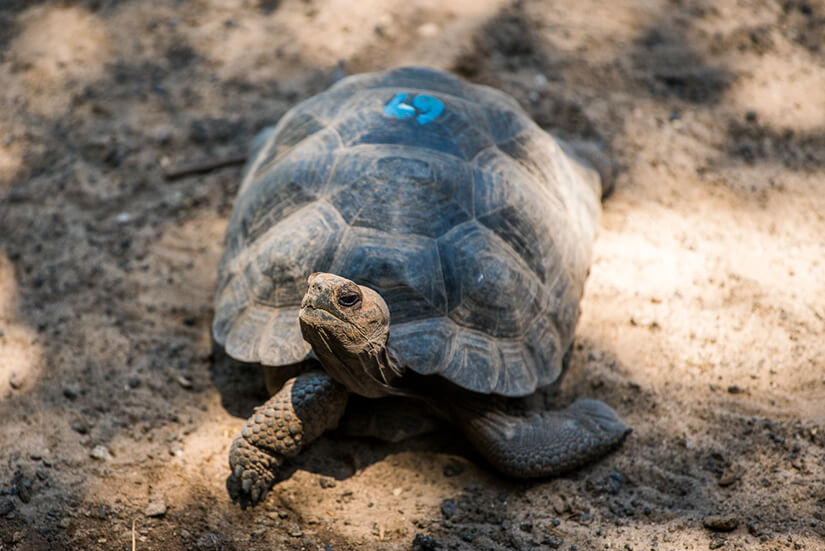
Galapagos Penguins
Galapagos penguins are the only penguin found north of the equator. Before our trip, I had no idea that there were any penguins in this region of the world, but once I learned of their presence on the islands, I was dying to see them! Penguins are one of my favorite animals—on par with puffins—and before this trip I had never seen them in the wild. We first saw the penguins while on a boat off the shores of Isabela Island. We didn’t have the right camera lens with us on the boat ride, so we couldn’t zoom in and you could barely see the penguins in our photos. They were so fun to observe in person, but I was a bit bummed that we didn’t get many great photos. Thankfully though, during a kayaking adventure, we encountered even more Galapagos penguins. This time we were prepared with the right lens, and I was so excited to have a second opportunity to see one of my favorite animals in the wild.
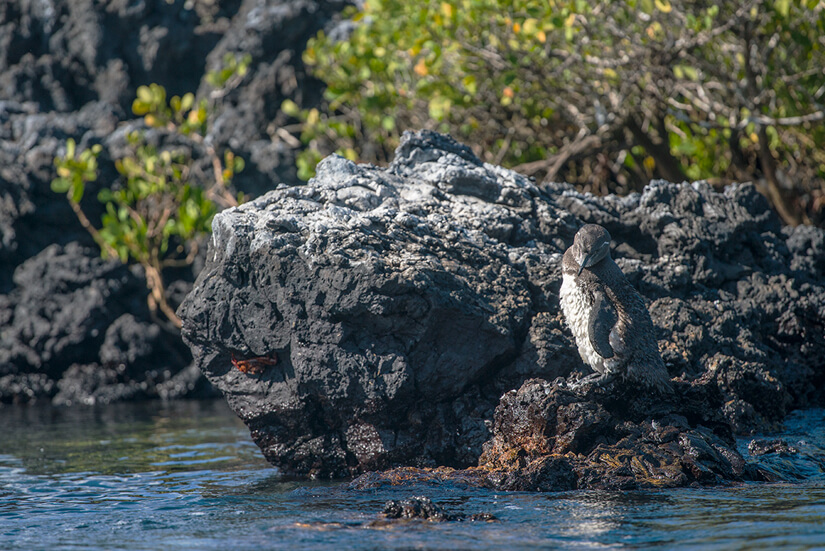
Blue-Footed Boobies
While not quite on the same level as penguins and puffins, Blue-Footed Boobies are another animal that I have been slightly obsessed with since I was a little kid. I would have to say, going into this trip, Blue-Footed Boobies were the animals I wanted to see the most. There’s just something about those bright blue feet that I love—they are so wacky and the blue almost doesn’t seem like it could be real! Well, the islands didn’t disappoint, and our Galakiwi guides found us lots of Blue-Footed Boobies throughout our trip. We watched them perch atop rocks, dive for food underwater and fly through the air.
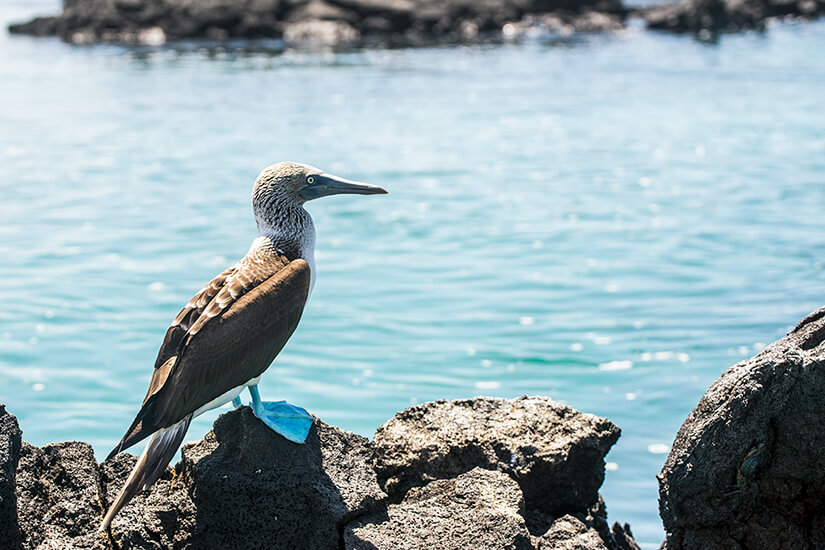
Marine Iguanas
The Galapagos Islands are home to both marine iguanas and land iguanas, and it is thought they evolved from a common ancestor after arriving on the islands. We encountered many marine iguanas during our trip, most of them on the shores of Floreana Island. Marine iguanas live on land and feed in the water, and they are the only lizard in the world that go into the sea. Most often we spotted these dinosaur resembling lizards sunning themselves on rocky shorelines, but we also watched them swim around in the water during a SUP session in Santa Cruz. Marine iguanas can grow to a size of 4-5 ft., and while we didn’t see any quite that large, they were way larger than I ever expected them to be!
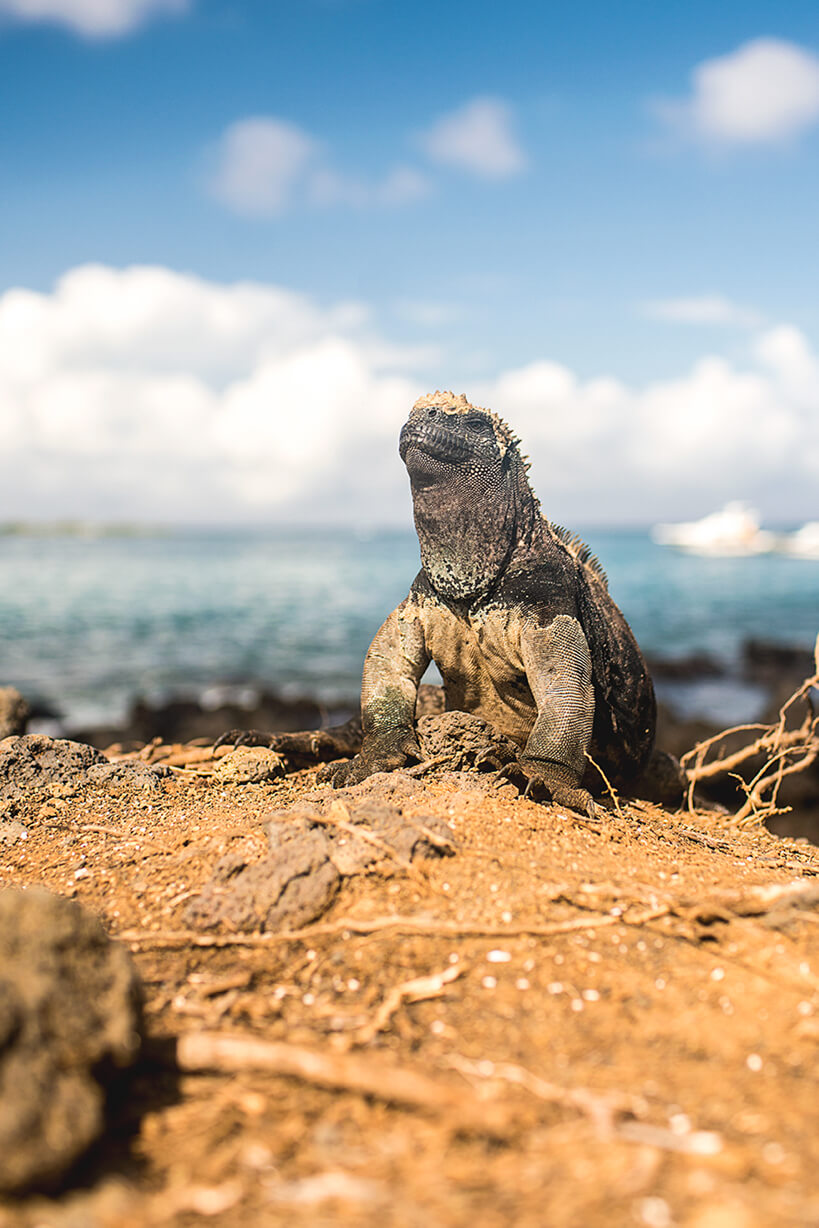
Dolphins
One afternoon while boating from San Cristobal Island to Floreana Island, the Galakiwi crew spotted something exciting in the water: dolphins! We were told we could sit at the front of the boat for a front row seat to the show, so of course, we certainly couldn’t resist! There were several dolphins swimming alongside our boat, and I watched in amazement as they jumped and played right in front of us. I literally could not peel my eyes away. The dolphins swam alongside our boat for quite some time, and it was such a special experience. It was just us, the dolphins, and nothing else in sight for miles.
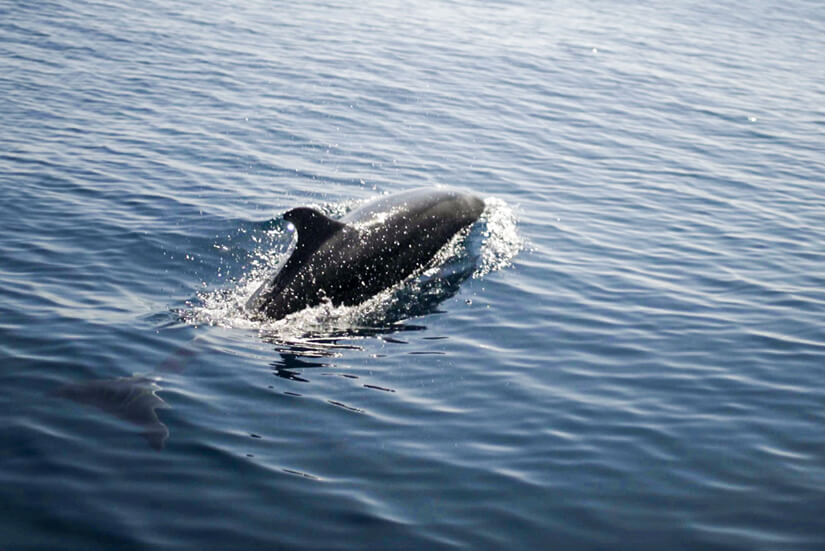
Sharks
I knew there were several types of sharks found in the Galapagos waters, but I was surprised just how many times we saw them swimming in the water right next to us. I can’t even begin to count how many sharks we spotted on our snorkeling adventures. Thankfully, neither Micah nor I are afraid of sharks—quite the opposite actually, we are enamored with them!
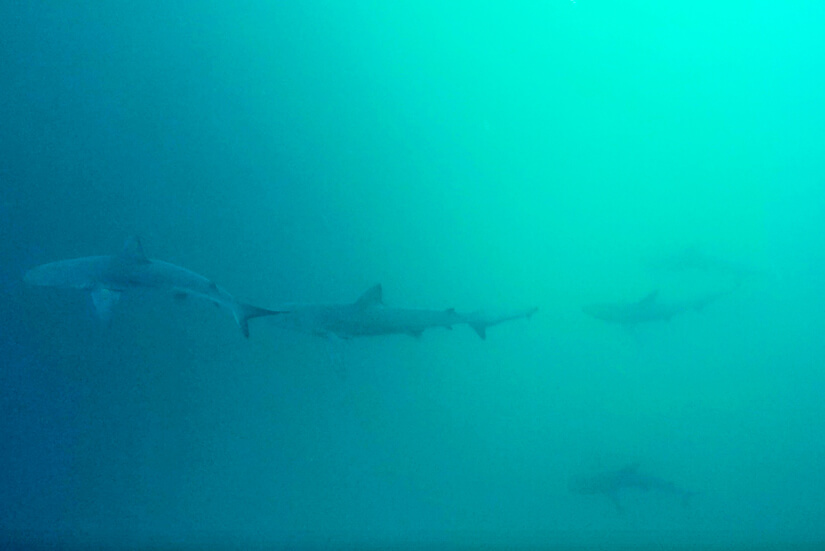
Sharks are so beautiful, but they get a bad rap and I have to say it’s a bit unfair. We saw black tipped sharks, white tipped sharks, and even hammerhead sharks (!), and none of them paid the slightest bit of attention to us. It was fascinating to swim so close to such powerful creatures and there were two encounters that stood out most in my memory. The first was during our snorkeling session at Kicker Rock. We were swimming between the towering rock formations when all of a sudden, the outline of hammerhead sharks came into view right below us. There were several hammerheads swimming around, but unfortunately, we weren’t able to get a good photo because Micah and I couldn’t dive down far enough to get a clear shot. Either way, it was such a thrilling experience, and I still can’t believe we had the opportunity to swim with hammerhead sharks!
The other completely amazing shark encounter was when we were snorkeling near Isabela Island. We saw several sharks swimming in the water, but I wasn’t prepared for what came next. There was a cove under the water that was filled with sharks! We all took turns diving down to the entrance of the cove for a better look. There had to be more than 30 sharks in the cove and it was such a crazy sight to see!
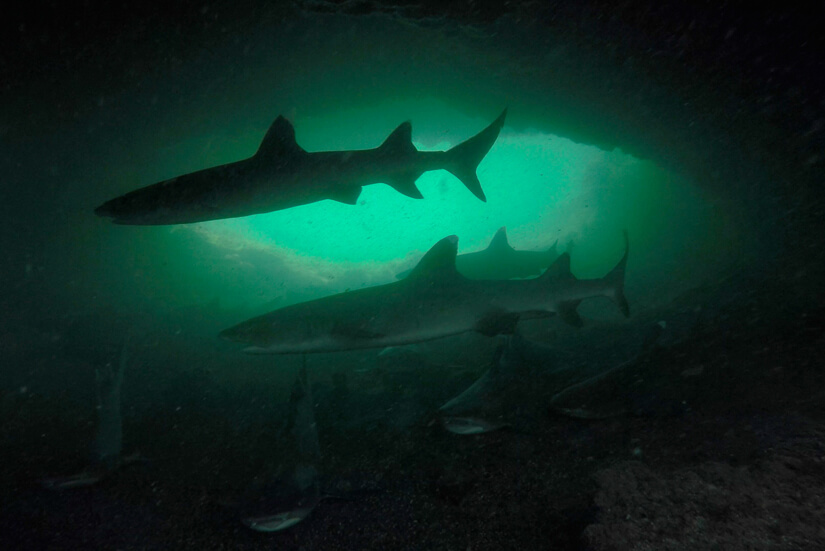
Flamingos
Another animal I never thought I’d see in the Galapagos Islands was a flamingo! We saw flamingos on Isabela Island while walking back to town after visiting the Tortoise Research Center. There is a boardwalk that leads through the heart of an estuary, and it allows you to see several types of wildlife along the way including flamingos! It was fun to unexpectedly see flamingos in the Galapagos—I normally picture them as Caribbean wildlife, but it just goes to show how diverse the wildlife population is in the Galapagos Islands!
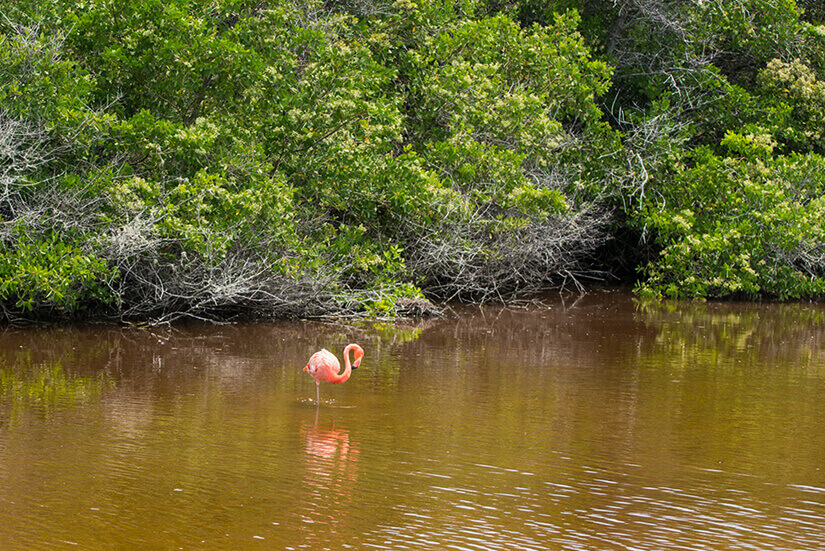
Sally Lightfoot Crabs
The colorful little Sally Lightfoot Crabs were so much fun to watch, and their vivid blue, red, and orange coloring is absolutely beautiful. They were so quick and would scamper effortlessly around the rocky shoreline. We saw these little crabs in several spots, but my favorite spot to watch them was when we went for a hike by our hotel on Floreana Island. After spending some time watching the crabs move, it’s easy to see why it is rumored they were named after a Caribbean dancer.
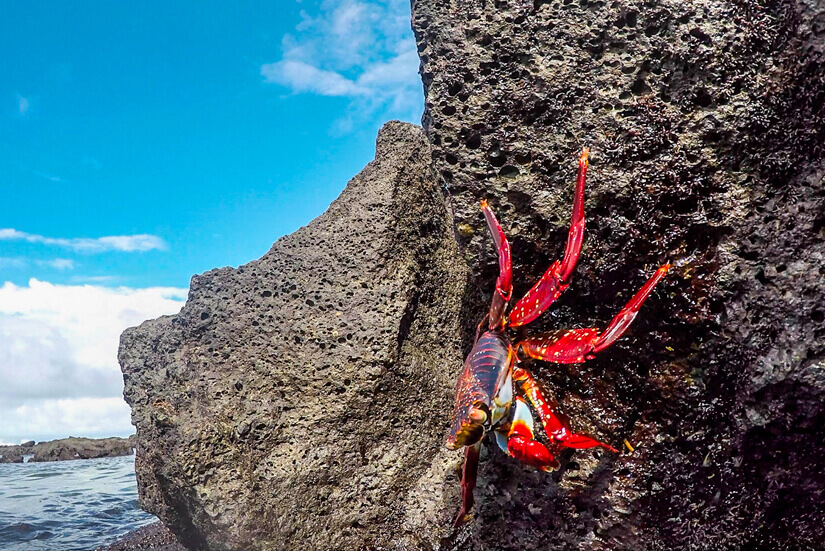
One of the things that amazed me the most about the wildlife in the Galapagos Islands was that the animals don’t have a fear of humans like they do in many other parts of the world. The wildlife we encountered would just mind their own business and carry on as usual. But, since the animals won’t necessarily run away at the sight of a human, you need to be especially careful to give them their space and keep a respectable distance away. It’s important to be a responsible traveler so this wonderful place can continue to thrive for many years to come.
When I think back about all the wildlife encounters that we had in the Galapagos Islands, it makes me smile. I am so grateful that we had such knowledgeable naturalist guides with us to help find and point out the wildlife throughout our trip. I am notoriously bad at spotting wildlife (I once thought a tree trunk was a bear…but hey, it was dark out!), so having Pablo and the Galakiwi crew show us around, really helped make our trip memorable. The crew knew just the right spots to take us to, which greatly increased our chances of spotting wildlife, and we will be forever grateful for the wonderful experience we had!
Which animals in the Galapagos Islands are your favorite?
Special thanks to Galakiwi for hosting us on an amazing adventure through the Galapagos Islands! As always, all opinions are our own.
Pin it!
